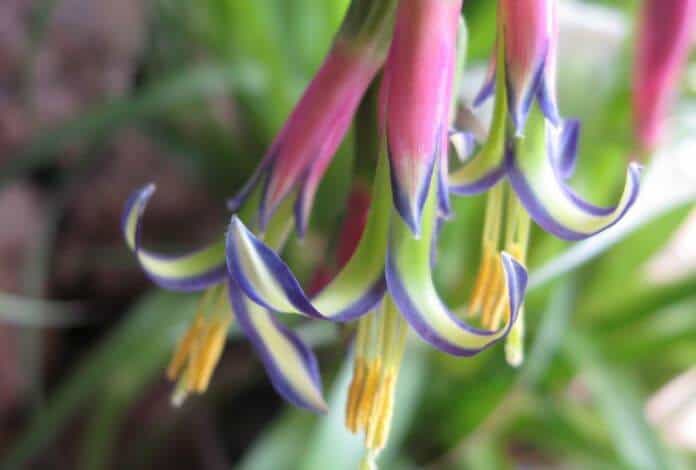Last Updated on January 7, 2023 by a Friendly Gardener
If you’re looking for color in your home garden, consider this delightfully resilient bromeliad, the Queens Tears Plant. A forgiving plant, the Queens Tears will tolerate periods of neglect for those who travel, are away from home, or are just a bit forgetful.
Botanically known as the Billbergia nutans, this tropical evergreen is a member of the Bromeliaceae family that has more than 70 members. It is considered an epiphytic bromeliad and is quite exotic as an indoor plant. The name is to honor Swedish botanist Gustav Johan Billberg.
Native to Argentina, Brazil, and Uruguay, it is a favorite in home gardens and can be cultivated in a traditional pot of soil or as a non-parasitic guest on another plant. Root systems are shallow, and like epiphytes, they will take necessary moisture through the foliage and blossoms.
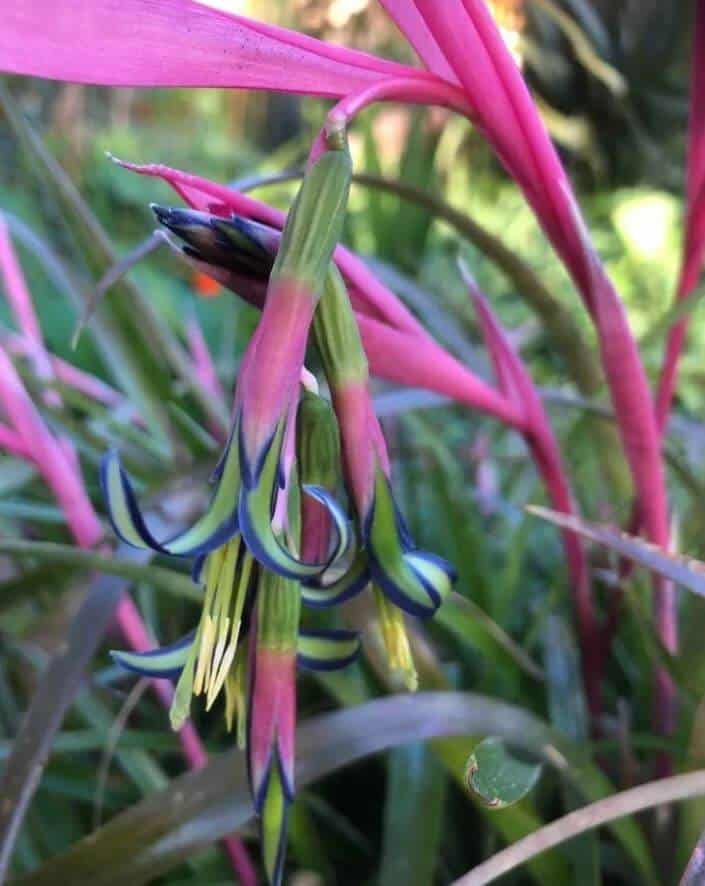
The Queens Tears plant multiplies with rhizomes forming funnel-shaped rosette clumps as it grows. Each rosette is formed of slender, long arching leathery leaves in a bronze greenish hue. Single leaves can reach approximately a foot in length, with teeth-like formations along the edges. Foliage is fleshy featuring a certain thickness that categorizes the plant as a succulent.
When the plant flowers, arching stalks will develop to host pink bracts with pendant blooms that are rich in nectar. Flowers feature green petals in a shade of chartreuse that boasts royal blue margins in the springtime together with long yellow stamens. This wealth of color casts a rainbow appearance.
This plant does not need particular help to flower, and it will bloom toward the end of March or the beginning of April. Flowers can last from six to eight weeks. The maximum plant growth will be roughly 18 to 24 inches in height and 24 to 30 inches in width. The Queens Tears can be cultivated outdoors in USDA hardiness zones 10a through 11b.
This plant is easy to divide, hence it is also known as the “Friendship Plant”. The parent plant will produce new offshoots several times during the year. The Queens Tears, while not a long-living species will feature an average lifespan of approximately three years.
Queens Tears Plant Care

Bromeliads are easy plants to care for with minimal environmental conditions. When cultivated indoors, they will require medium to bright light.
Soil
When cultivating a Queens Tears plant indoors, the ideal soil will be a bromeliad or orchid soil mixture. Should you prefer to blend your own, mix one part of standard potting soil with two parts of tree bark mixture or perlite. Soil pH can be acidic to neutral.
Light
The Billbergia nutans can do with a bit of shade in the summer. For the remainder of the year, it should be positioned to receive bright indirect light to remain healthy. Direct or full exposure to summer sun can ruin the plant’s blossoms.
Water
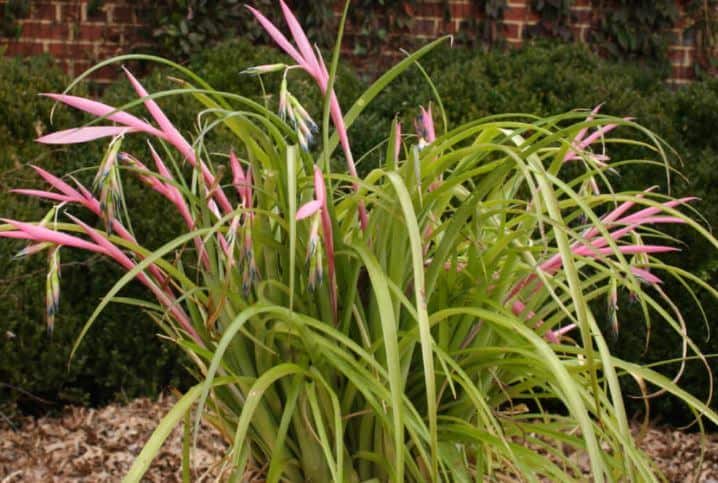
As an epiphytic bromeliad, the Queens Tears will procure most of the water it needs through moisture in the surrounding air. It has, in fact, a very shallow root system. Bromeliads with upward pointing center cups can have those cups filled with water in the summer. Your Queens Tears should be watered daily in summer to maintain leaves, blooms, and roots moist but never soggy. During the cooler seasons of autumn, winter, and spring, water your plant just enough to keep the soil moistened. Mist every couple of days.
Humidity
Your Queens Tears plant requires a humid environment in the summer months. Misting your plant daily will aid the foliage and blooms to remain healthy.
Temperature
If there is one aspect of environmental conditions where this plant is exigent, it’s regarding temperature, and its preferences will change with the seasons. In the summer, Queens Tears like an environmental temperature between 65° and 80°F. In the cooler seasons of spring, fall, and winter, your plant will prefer temperatures measuring between 60° and 75°F. While this bromeliad can tolerate a temperature drop to 40°F, extended exposure will negatively affect the next season’s flowering.
Feeding and Flowering
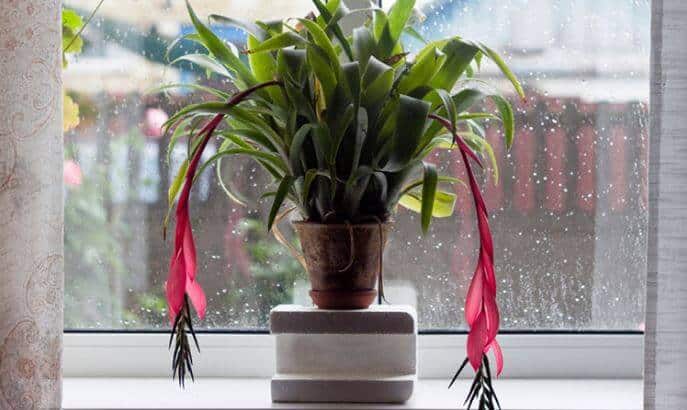
Feed the Queens Tears a balanced liquid fertilizer every two weeks in the summer. The water with fertilizer can also be poured directly into the center cup. It can also be used to water the soil bed for roots and to mist the leaves. For the remainder of the year, reduce feeding to once monthly.
If your plant does not seem to want to flower, add a teaspoon of Epsom salts to the water used to water them for a month and blooms should appear. If the plant refuses to bloom, place it inside a plastic bag together with an apple. Leave the plant like this for a week. During this time, the apple will produce ethylene gas. The weeklong treatment should induce flowering within one to two months’ time.
Pruning
The Queens Tears do not require pruning. It will need pruning only after it blooms and this happens once in its lifetime. Leaf tips will become brown after white flowers that are insignificant appear signaling the end of a stalk. Prune foliage and blossoms all the way down to pups or offsets at the plant’s base.
Potting and Repotting
Repotting your plant will be necessary as it grows larger. It’s best to repot before the blooming season begins. When repotting, choose a new container that is one size larger each time.
Queens Tears Propagation
Once your Queens Tears plant has produced flowers, propagation can be considered. Look for new shoots at the plant base. You can uproot these and separate them from the mother plant with a sterile garden knife. Simply transfer these offsets into a separate container and wait several weeks for them to take root.
Problems for a Queens Tears Plant
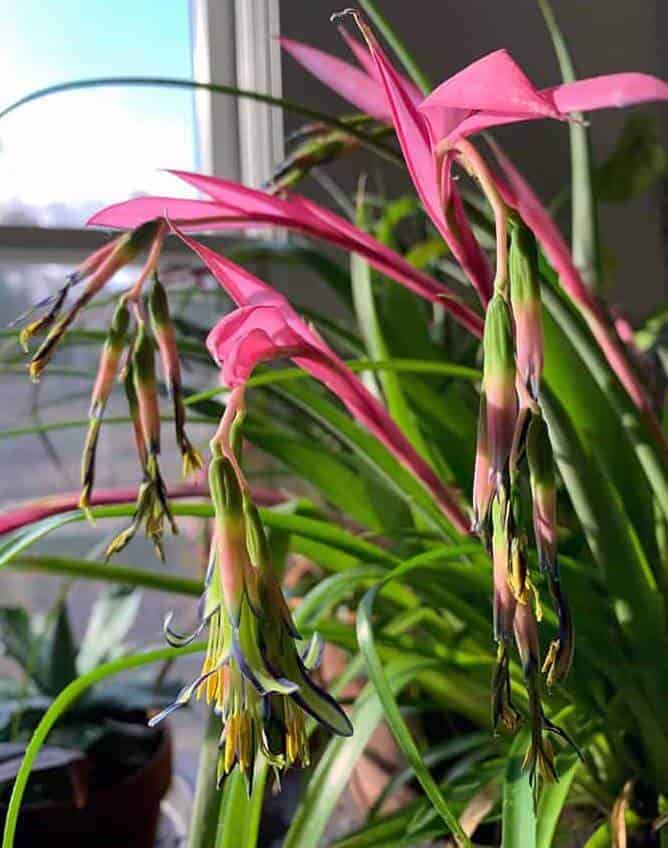
The Queens Tears plant is at risk of diseases common to most indoor houseplants such as powdery mildew or root rot. Pest to watch for include the red spider mite, aphids, and scale. Pests can be removed manually in the case of scale, otherwise treat your plant with organic Neem oil to keep them at bay.
Too much watering can contribute to fungal diseases like root rot or powdery mildew. Foliage turning yellow or brown is also an indication that your plant is receiving too much water.
When leaves turn pale from their normal dark green, they need a dose of fertilizer.
Good humidity levels will help to combat spider mites. Beware of drafts, so position your Queens Tears in a spot where it is protected.
Queens Tears Toxicity
The Queens Tears plant is a safe indoor plant to cultivate because it is non-toxic to dogs and cats.

